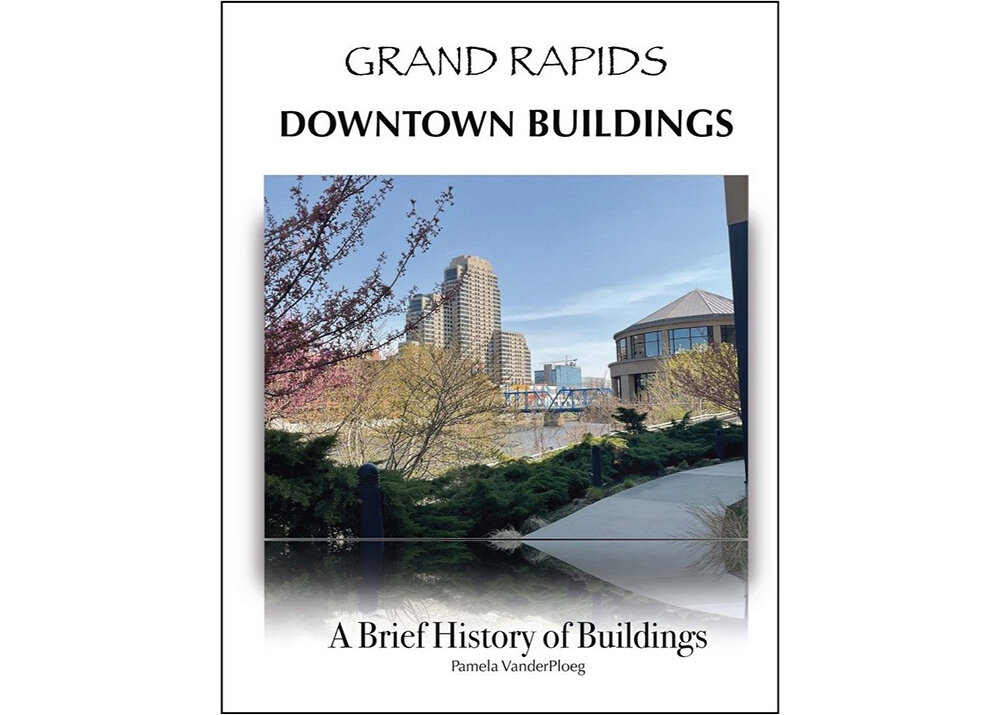Grand Rapids is a living museum of historical and modern architectural beauty. A new book, “Grand Rapids Downtown Buildings,” details the city’s eclectic landscape through the eyes of its author, Grand Rapids native Pamela VanderPloeg.
 The book showcases more than 180 buildings, ranging from early-1800s brick structures to 21st-century concrete and glass towers like the Amway Grand Plaza. A short description of each building is accompanied by a photograph taken by the author as well as anecdotal musings.
The book showcases more than 180 buildings, ranging from early-1800s brick structures to 21st-century concrete and glass towers like the Amway Grand Plaza. A short description of each building is accompanied by a photograph taken by the author as well as anecdotal musings.
VanderPloeg said she was inspired to write the book after leading downtown architectural tours for several years.
“It seemed so clear that people — visitors and residents — would like a guidebook to take along on a downtown architectural adventure,” she said.
Throughout the book, VanderPloeg captures how Grand Rapids has retained a sense of place few other cities of its size have managed to maintain.
If you aren’t a Grand Rapids native, you’re likely to discover structures you haven’t seen before, like the Flat Iron Building, which anchors the Ledyard Block Historic District. The building was originally home to a bank, and in the mid-2000s, a law firm remodeled and restored it to its former glory.
A modern lookalike structure to the Flat Iron Building was constructed in 2021 and is now occupied by a 147-room Marriott Residence Inn.
Buildings with pedigrees abound in downtown Grand Rapids, which was once considered the furniture capital of the world.
“I have more than 180 favorite downtown buildings, and I love them all for so many different reasons,” VanderPloeg said.
Numerous elegant private homes are featured in the book, such as the Eastlake-style home of the late Thomas M. Peck and his spouse, Mary. Peck was a pharmacist, and he and his wife were art collectors who held fancy parties at their home in the Heritage Hill Historic District.
Another private home is now used by Grand Rapids Community College. Once the residence of the late lumberman T. Stewart White, the Tudor Revival home was converted into a furniture museum with the help of a Works Progress Administration grant. It was later used as a women’s dormitory for Davenport University before being turned over to the community college.
VanderPloeg also uses various buildings to tell the social and cultural history of Grand Rapids, as she does with the Meijer Majestic Theatre, which today is home to the Grand Rapids Civic Theatre, in part due to the support of the late Meijer founder and theater patron Frederik Meijer. VanderPloeg outlines how the original theater was segregated until a lawsuit brought by a Black dentist ended the practice of relegating Black patrons to balcony seating. Like many theaters, the Majestic was slated for demolition until it was saved by the Civic Theatre.
One of the most spectacular buildings in the book is the former Woodbridge N. Ferris Building, which was built in 1909 to house the city’s federal courthouse and post office. Occupying an entire square block on Pearl Street, the building is now the home of Ferris State University’s Kendall College of Art and Design. It was previously occupied by the Grand Rapids Art Museum until 2007.
Churches are prominently displayed in the book, including the Cathedral of Saint Andrew, the First United Methodist Church and the former Central Seventh Day Adventist Church on Sheldon Boulevard. Contrasting this are details about several bars and restaurants that occupy historic buildings, like the former fire engine house on Leonard Street, which has become a vintage-baseball-themed microbrewery.
VanderPloeg has also compiled a convenient listing and description of the architects and builders who have played a major role in saving the city’s infrastructure.
When you finish leafing through the book, I’m sure you’ll be looking to book a weekend visit to Grand Rapids to stay in one of the numerous hotels VanderPloeg features. One such hotel is the elegant Amway Grand Plaza, which was previously the Pantlind Hotel. It had reached fleabag status until being renovated and is often pointed to as the catalyst for turning the corner on reuse and preservation in Grand Rapids.
Support City Pulse - Donate Today!
Comments
No comments on this item Please log in to comment by clicking here